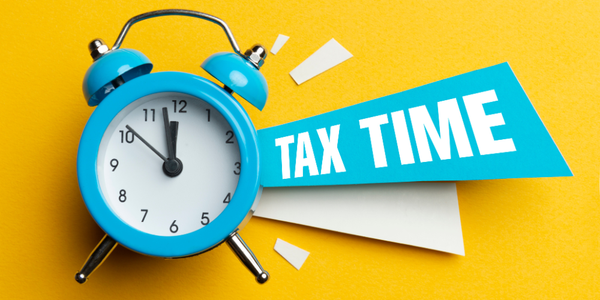Tax Implications: Goods Movement in UAE Free Zones

Picture a dynamic logistics hub where goods are stored, consolidated, or re-exported with ease. That’s the value proposition of the UAE’s free zones, offering infrastructure, trade access, and tax advantages.
But these benefits come with a regulatory framework, especially when it comes to VAT on the movement of goods. Understanding how VAT applies to goods entering, leaving, or moving within these zones is essential to staying compliant and cost-efficient.
Understanding Designated Zones vs. Free Zones
Not all free zones are treated equally under UAE VAT law. Only specific zones, officially designated by Cabinet Decision, qualify as Designated Zones. These zones are considered outside the UAE for VAT on goods, but not for services.
To qualify as a Designated Zone, a free zone must:
- Be fenced and secure
- Be under strict customs control
- Maintain comprehensive records of goods movement
- Be listed in a Cabinet Decision and comply with FTA requirements
Examples include the Dubai Airport Free Zone (DAFZA), Jebel Ali Free Zone (JAFZA), and the KIZAD Free Zone, among others.
VAT Treatment Within Designated Zones
When goods are supplied within a Designated Zone, or between two Designated Zones, and they remain under customs suspension, the transaction is treated as outside the scope of VAT. This makes such movements tax-neutral—no VAT applies as long as the goods:
- Are not consumed or used internally
- Remain under customs control
- Are supported by proper documentation
For example, moving electronic parts from JAFZA to DAFZA for re-export is not subject to VAT if customs rules are followed and records are in place.
However, once goods are used or altered within the zone (e.g., installed for internal business use, assembled, or consumed), they are treated as a taxable supply, and 5% VAT applies.
Goods Moved to the UAE Mainland
Moving goods from a Designated Zone into the UAE mainland is considered an import and is subject to 5% VAT. This can occur in two main ways:
- If the mainland customer clears the goods through customs, the VAT is accounted for via the Reverse Charge Mechanism (RCM) on their VAT return.
- If a business in the free zone brings goods to the mainland, it must account for VAT as the importer using the Reverse Charge Mechanism (RCM).
This VAT is recoverable if the importer is fully taxable and not in a partially exempt sector. Maintaining proper customs declarations and VAT reporting is key to ensuring accurate treatment of such transfers.
Imports into a Designated Zone from Outside the UAE
Goods imported directly from outside the UAE into a Designated Zone are not subject to UAE VAT, as long as they remain under customs suspension. This allows businesses to defer VAT until the goods are:
- Released into the mainland UAE
- Sold for consumption within the zone
This deferred VAT treatment provides a significant cash flow advantage for importers who store or process goods before local sale or export.
Exports from Designated Zones
When goods are moved out of a Designated Zone and shipped overseas, the transaction qualifies as a zero-rated export, meaning VAT is charged at 0%, provided:
- The goods physically leave the UAE within 90 days
- Export documentation is maintained (airway bill, commercial invoice, customs exit record)
Failure to maintain evidence may result in the FTA disallowing zero-rating and treating the supply as taxable.
Documentation: The Compliance Backbone
To apply the correct VAT treatment, businesses must maintain:
- Customs declarations and transfer documents
- Inventory records segregating bonded and non-bonded goods
- Written confirmation of business use, where applicable
- Contracts or invoices showing the destination and VAT treatment
Missing or inadequate documentation can invalidate otherwise compliant VAT positions.
Common Pitfalls
- Assuming all free zones are tax-free: Only Designated Zones enjoy offshore VAT status for goods.
- Misusing goods internally in zones: Applicable for 5% VAT.
- Failing to apply RCM on mainland deliveries: It can result in underreporting VAT.
- Lack of export proof: Disqualifies zero-rating.
- Blurring service and goods rules: Services in Designated Zones are always taxable unless specifically exempt.
Corporate Tax Is Separate
It’s important to note that corporate tax treatment in free zones differs from VAT rules. Businesses in qualifying free zones may be eligible for 0% corporate tax on qualifying income.
Still, that status depends on separate criteria, such as maintaining adequate substance, not earning excluded income, and meeting reporting obligations. Corporate tax incentives do not override or alter VAT obligations.
Practical Tips for Businesses
- Verify the Designated Zone status of your location.
- Track goods movements with a system that distinguishes between customs-cleared and bonded items.
- Train your accounting team to handle VAT on mainland entries, exports, and internal use.
- Consult VAT specialists for proper structuring, especially if you're managing complex supply chains.
Struggling to Understand VAT on Goods Movement in UAE Free Zones? We’ve Got You Covered
From understanding how VAT applies within Designated vs. Non-Designated Zones, to managing Reverse Charge Mechanism obligations and proper self-invoicing, navigating goods movement in Free Zones is more complex than ever.
At 10xM, we specialize in helping businesses like yours stay fully aligned with the Federal Tax Authority’s (FTA) latest VAT guidance. Whether you’re importing, transferring goods between Free Zones, or re-exporting items, our experienced tax advisors ensure your operations remain compliant, audit-ready, and penalty-free.
Don’t leave your compliance to chance. Book a free consultation today and move forward with clarity and confidence.




